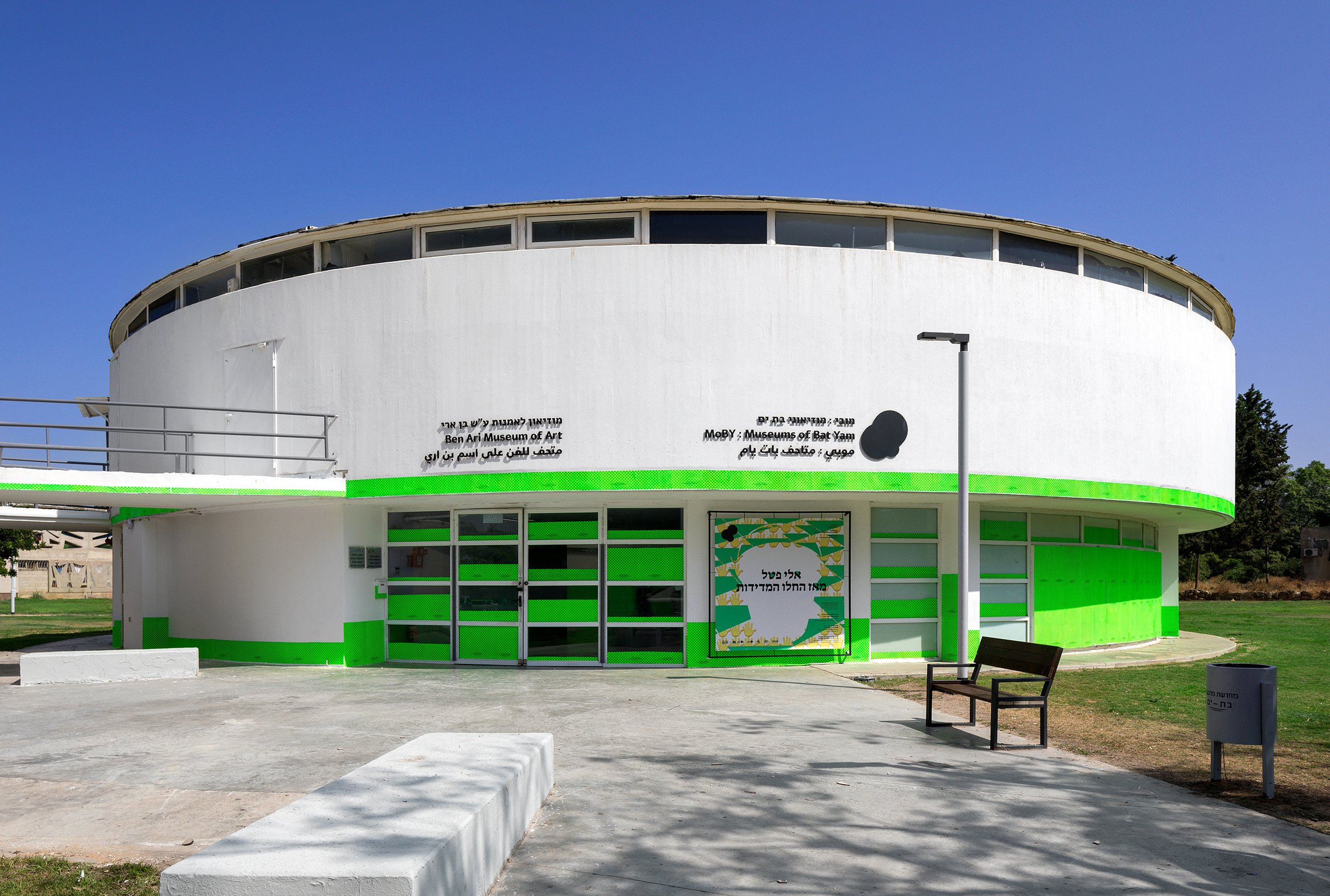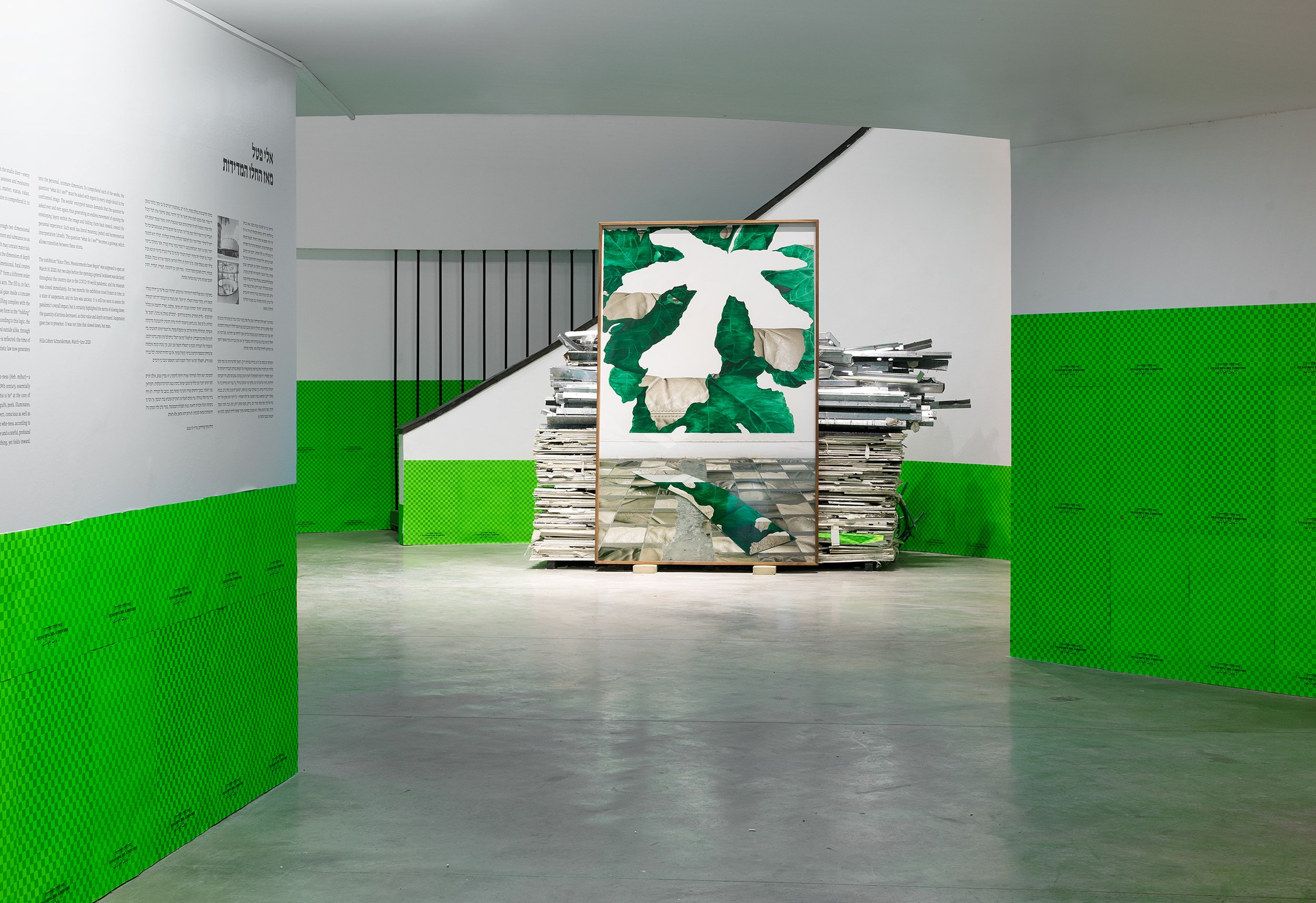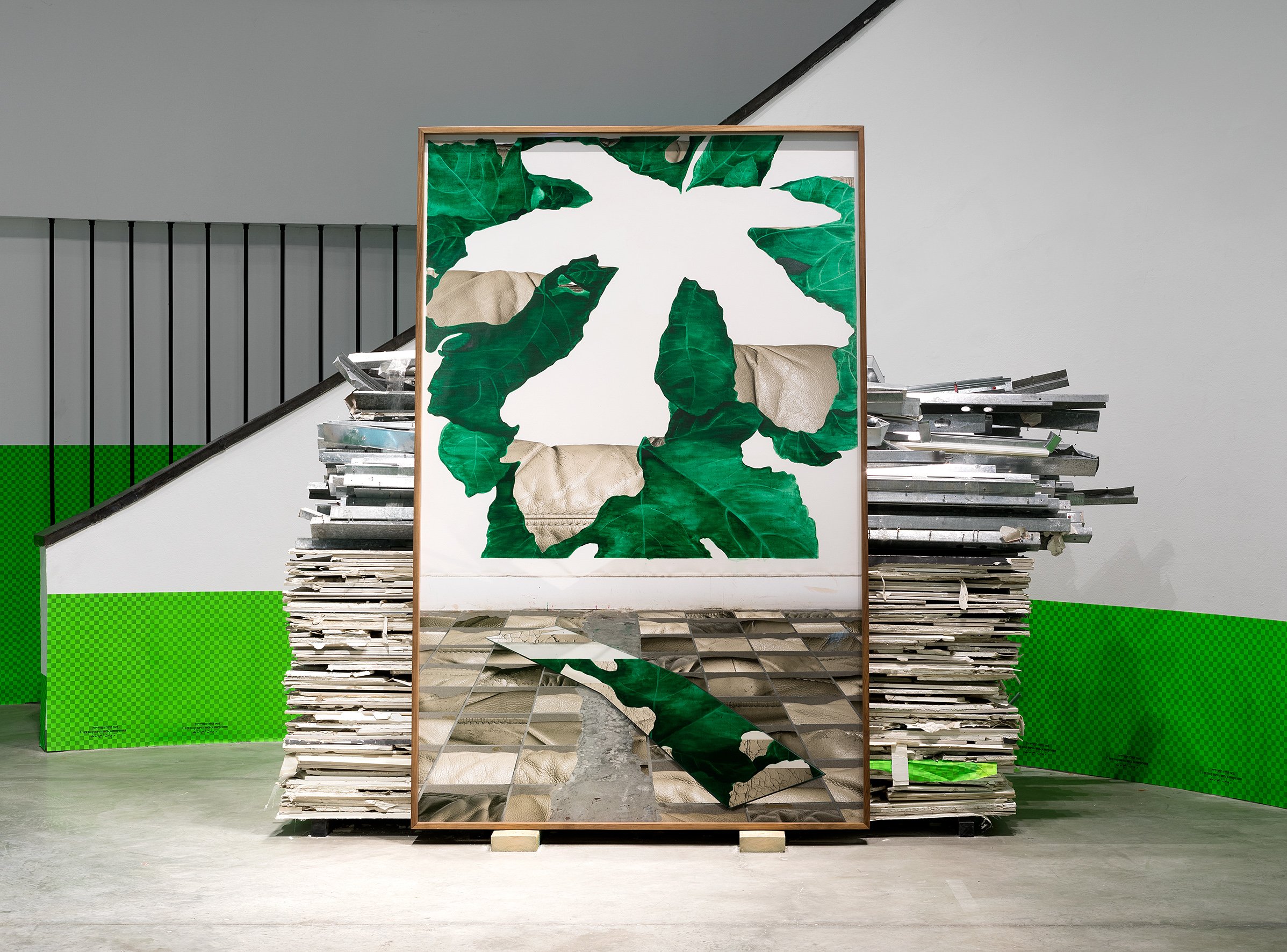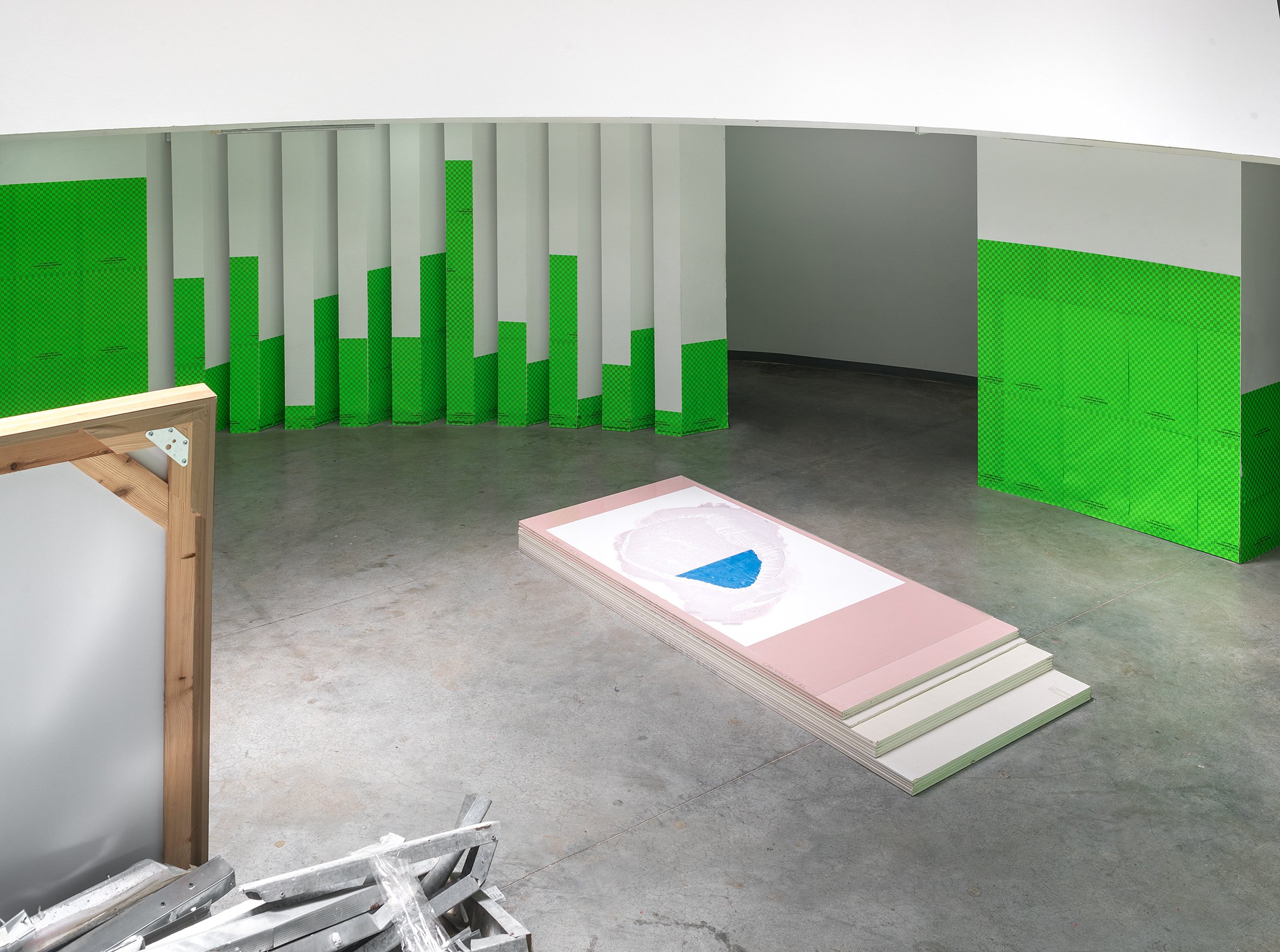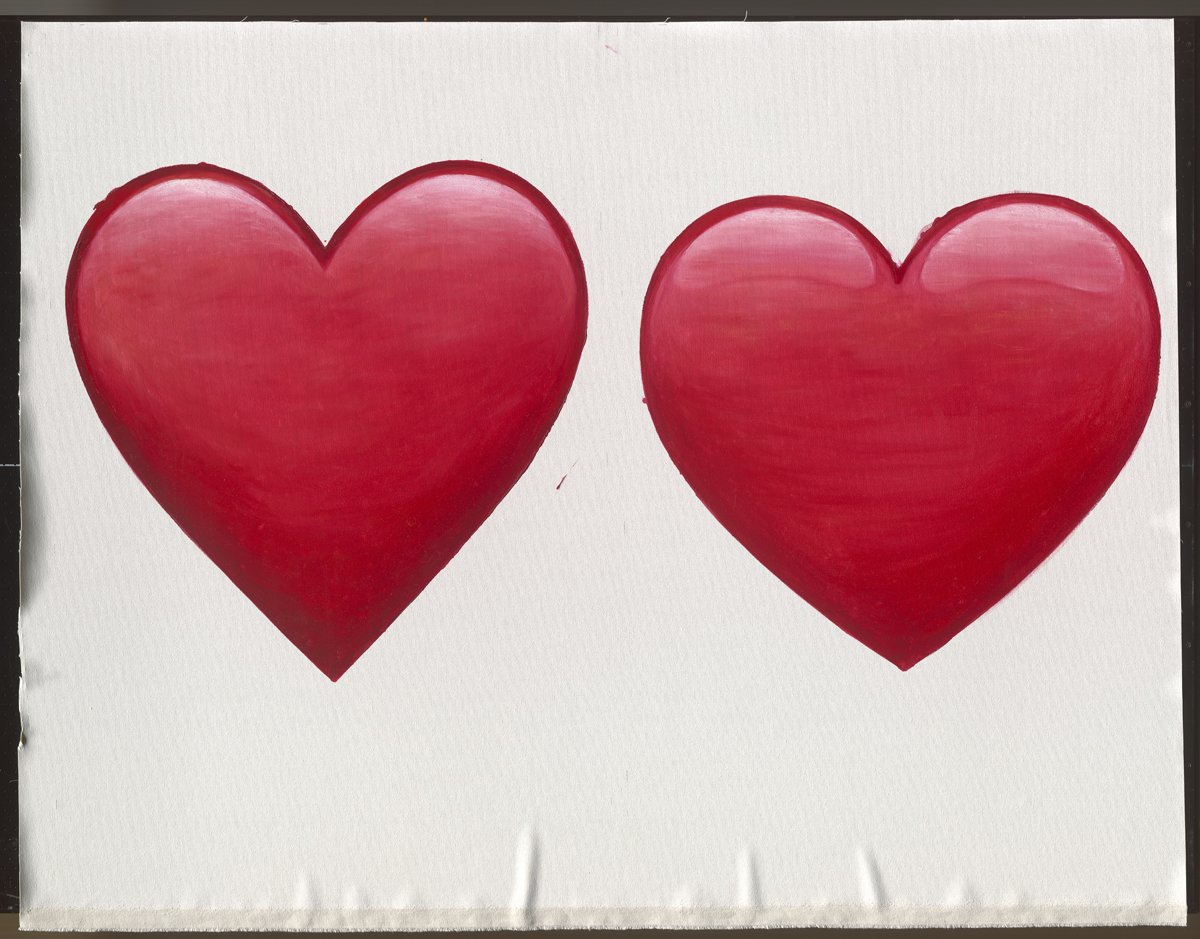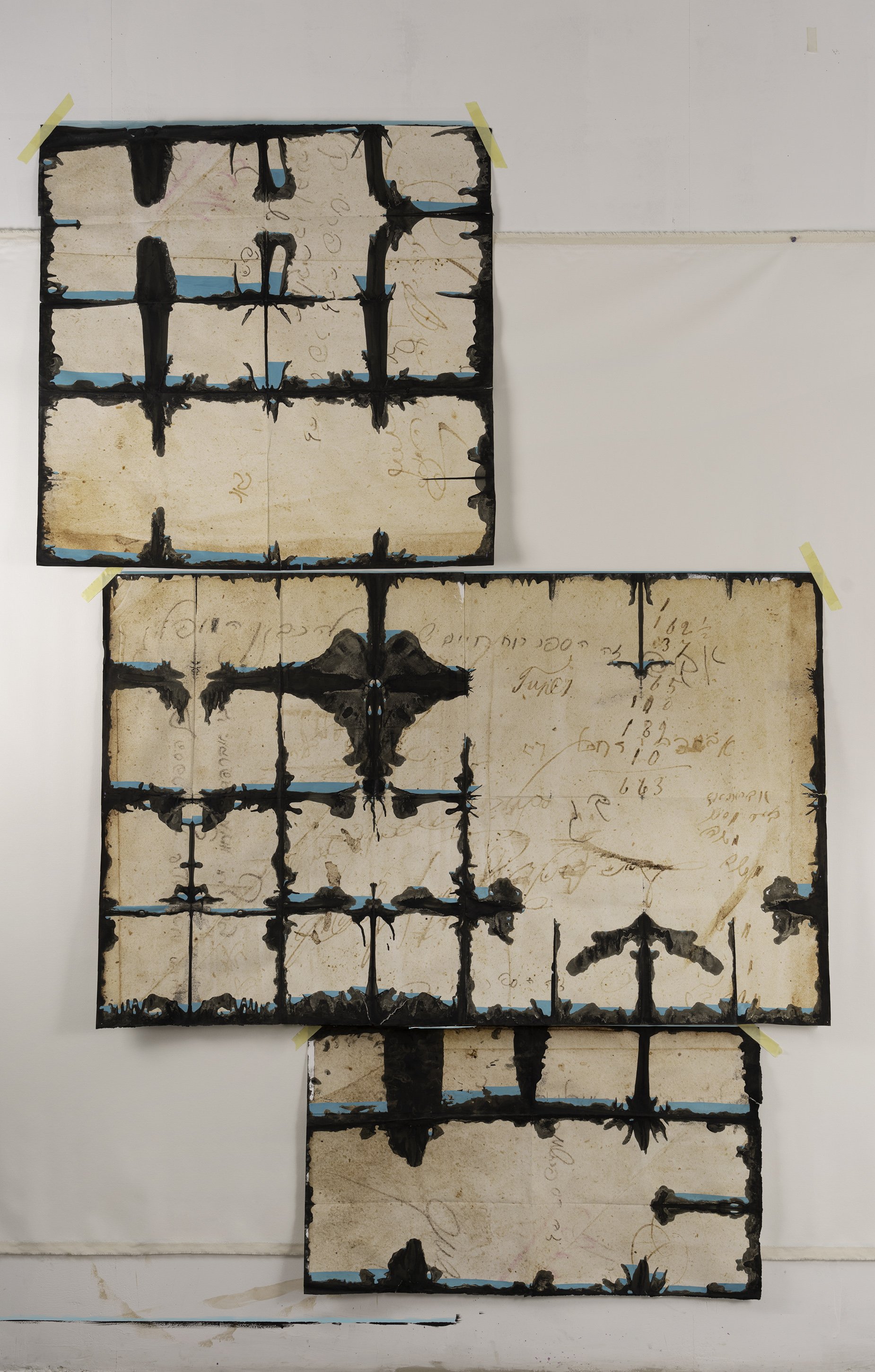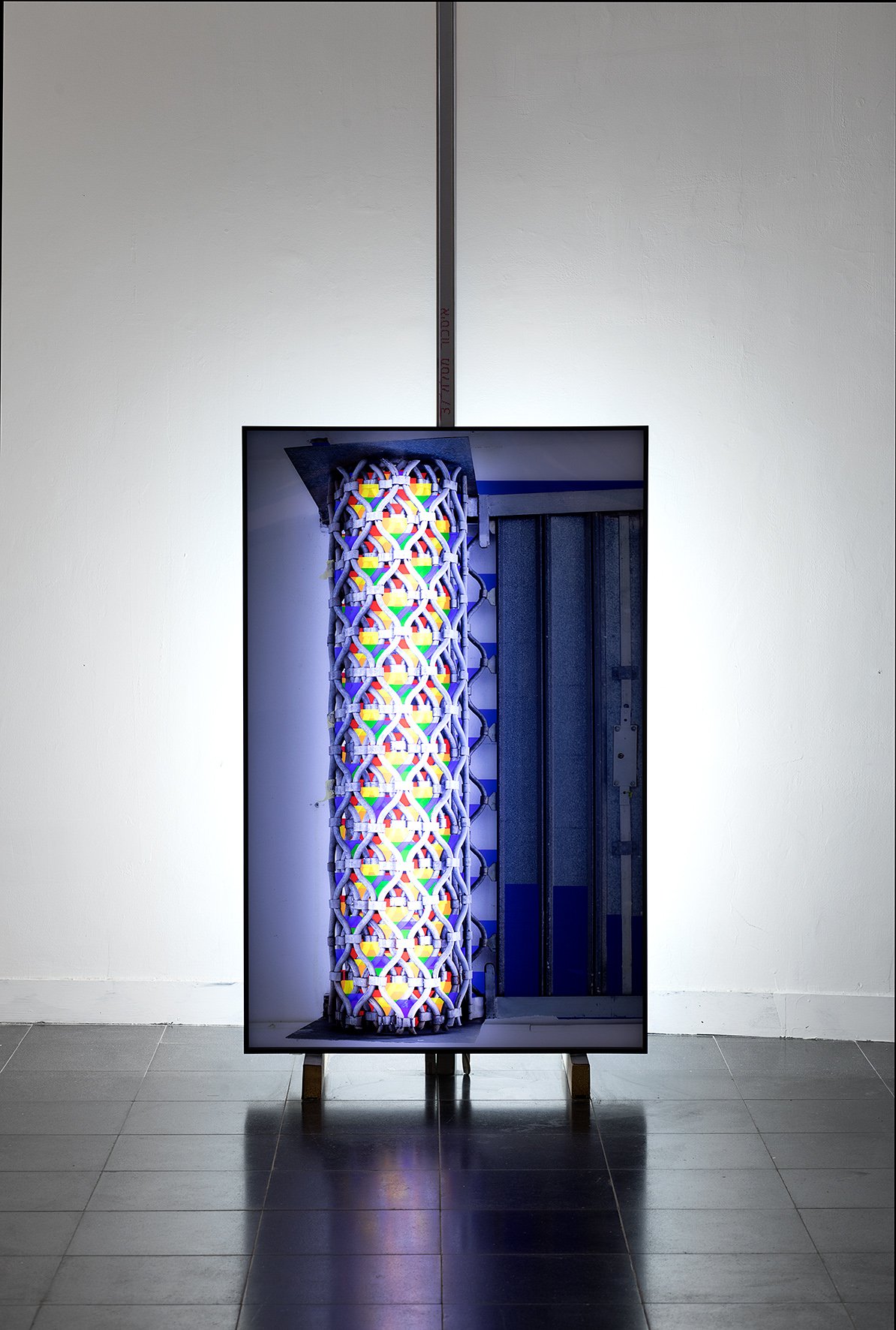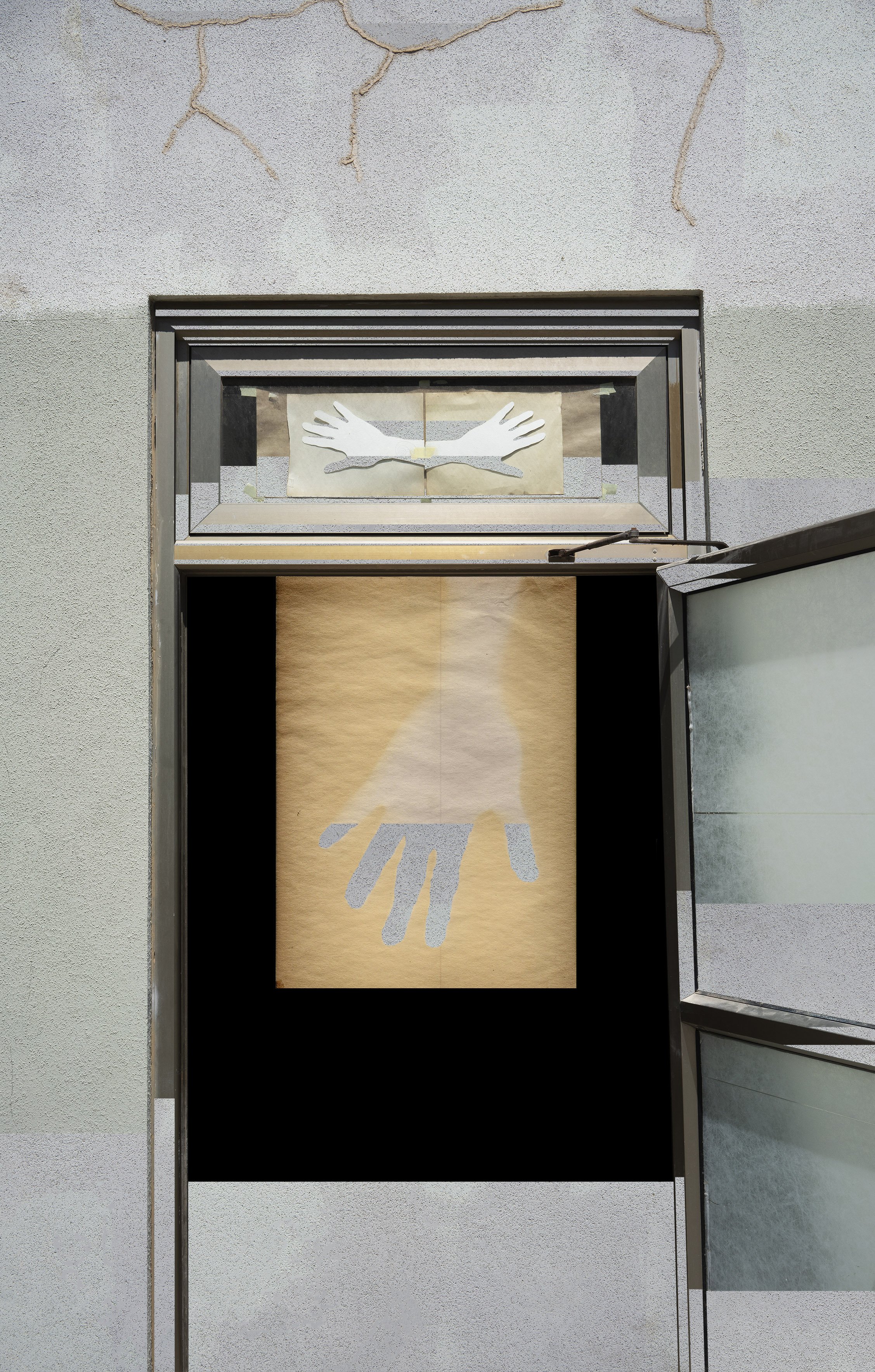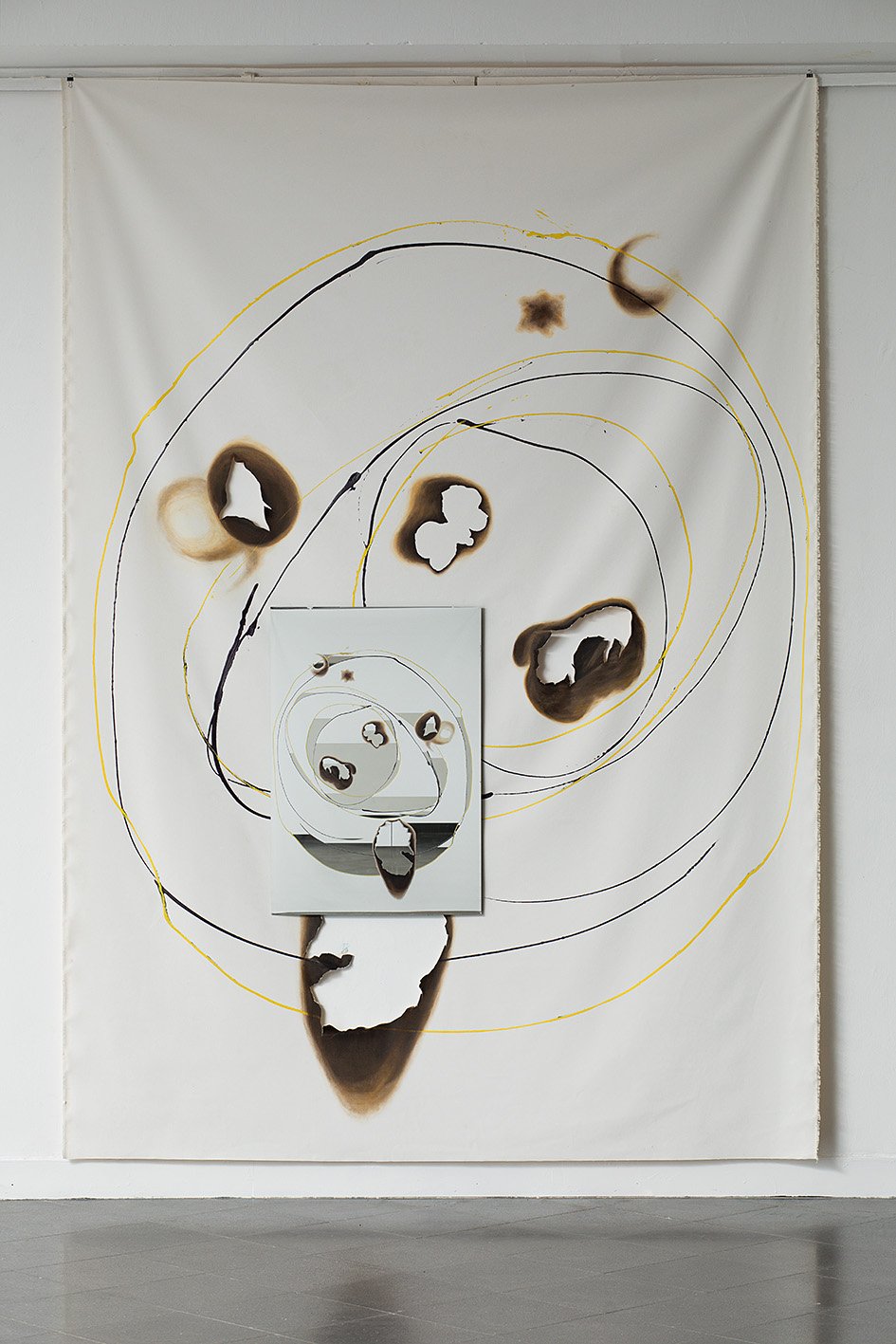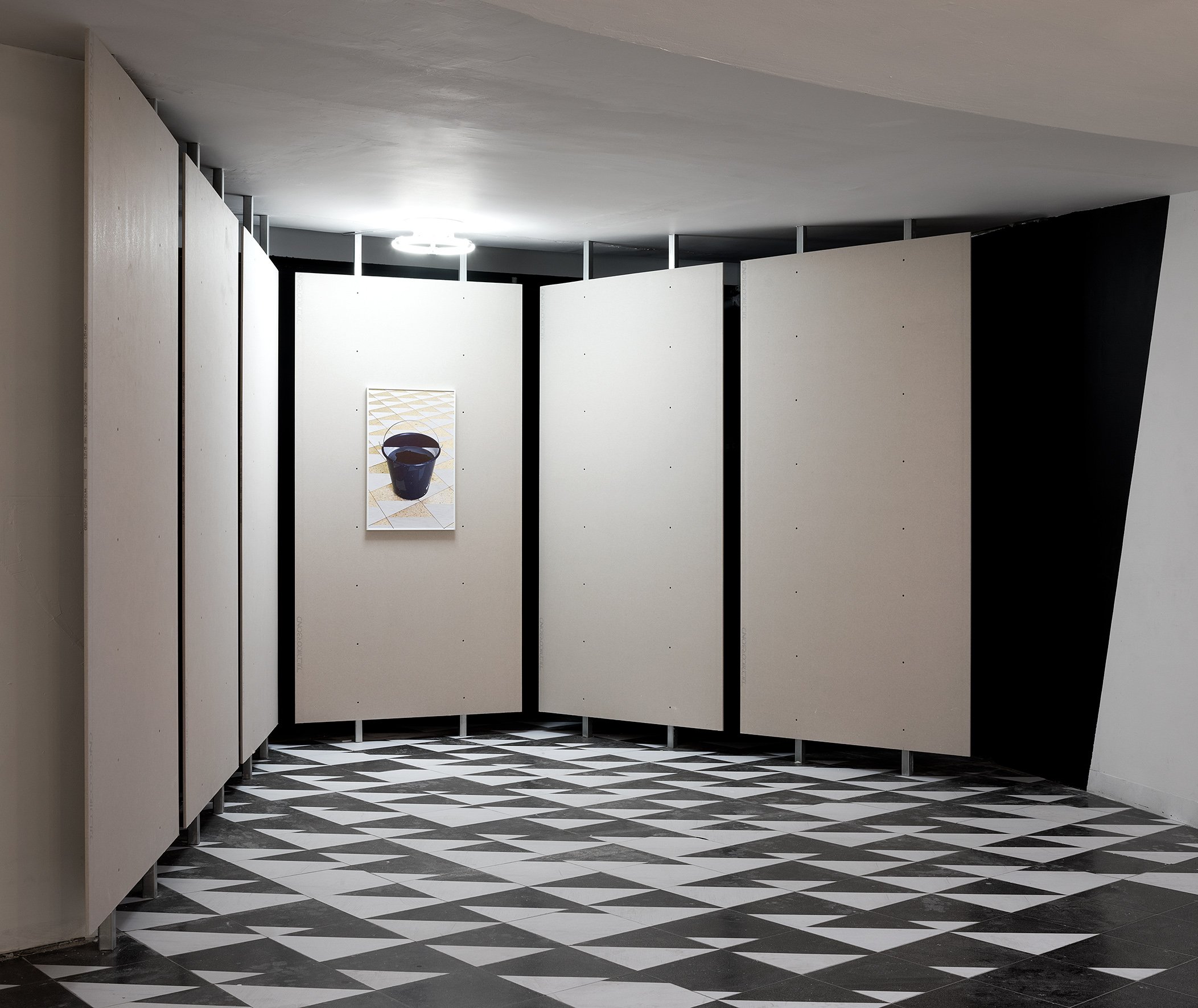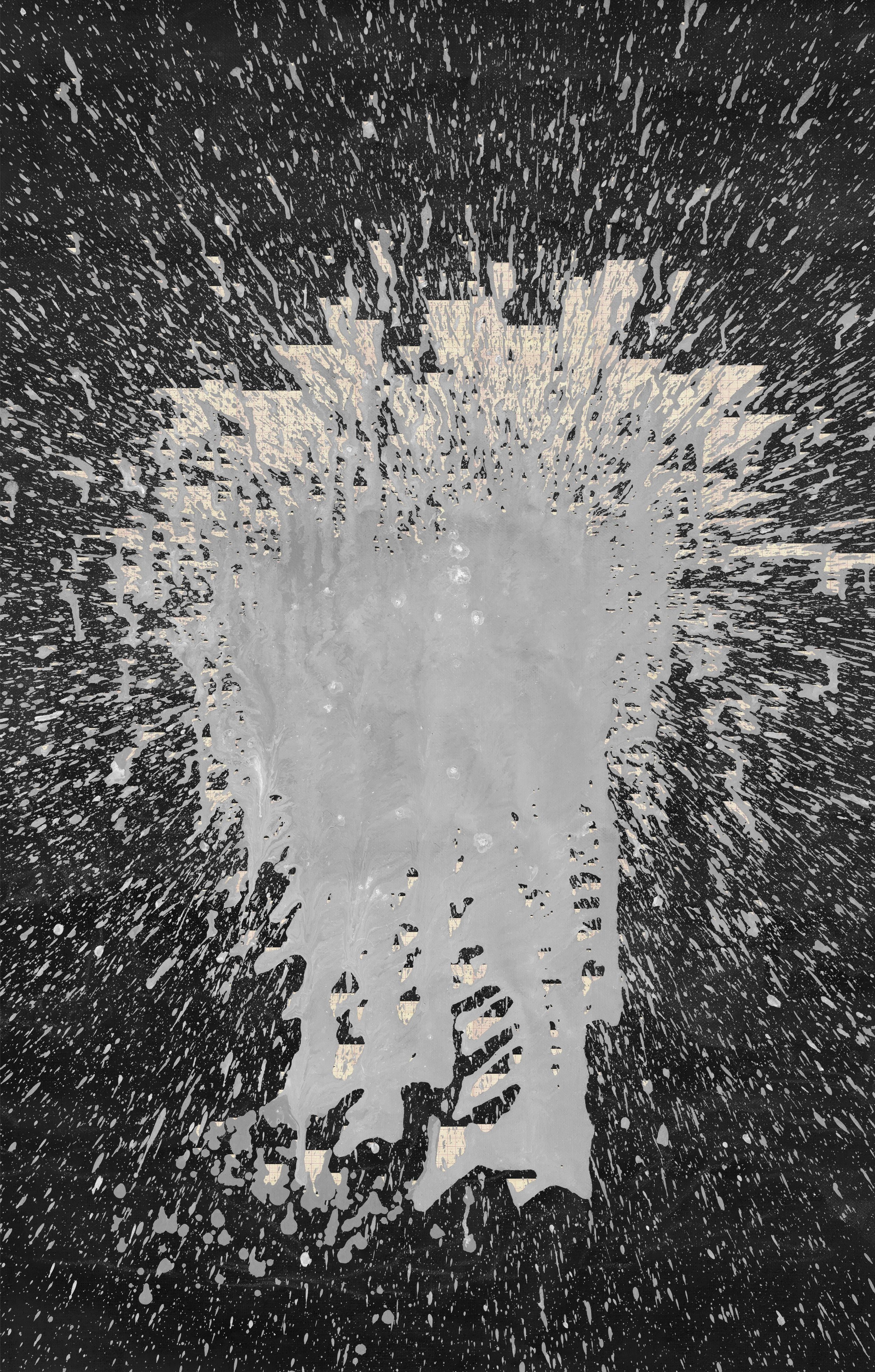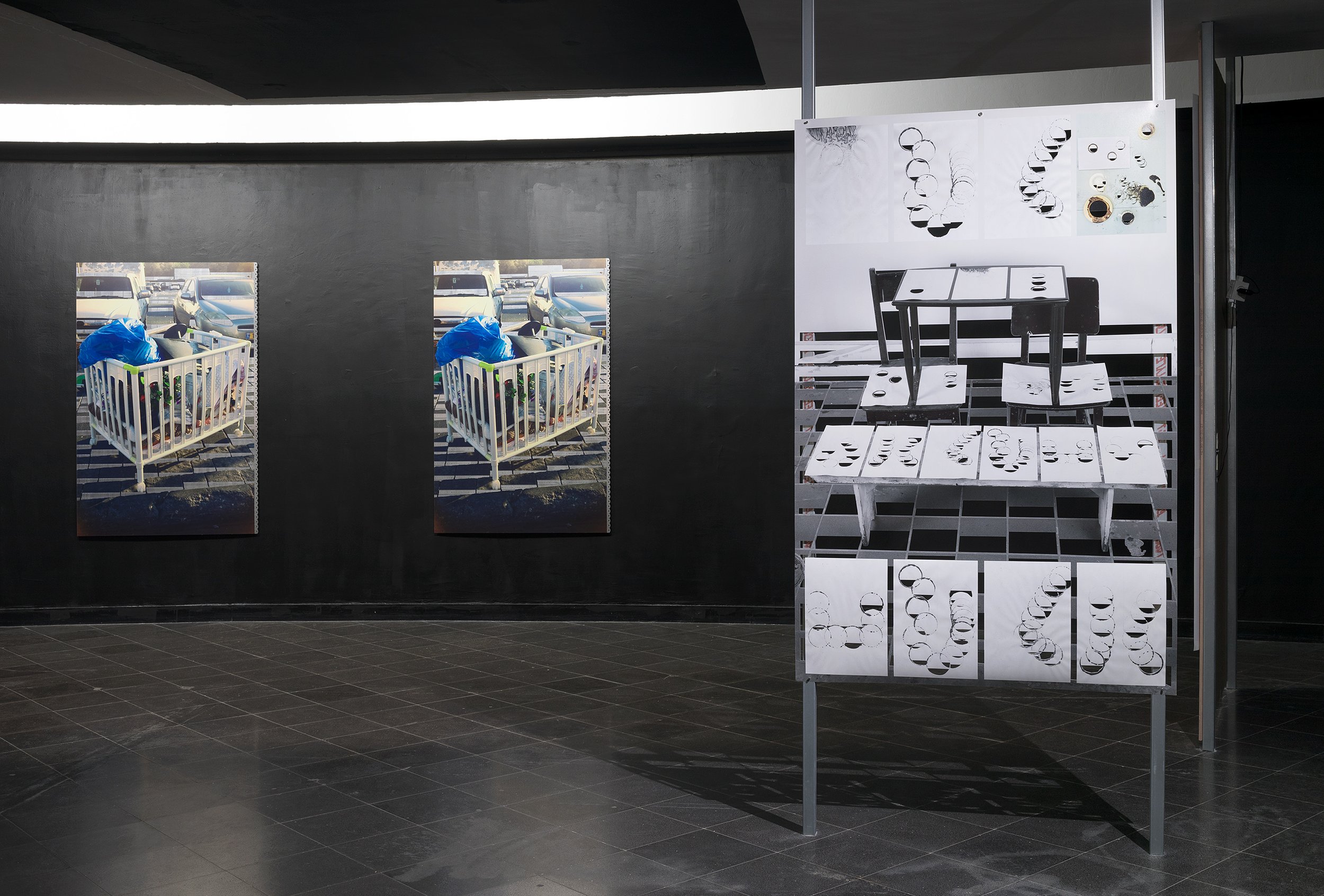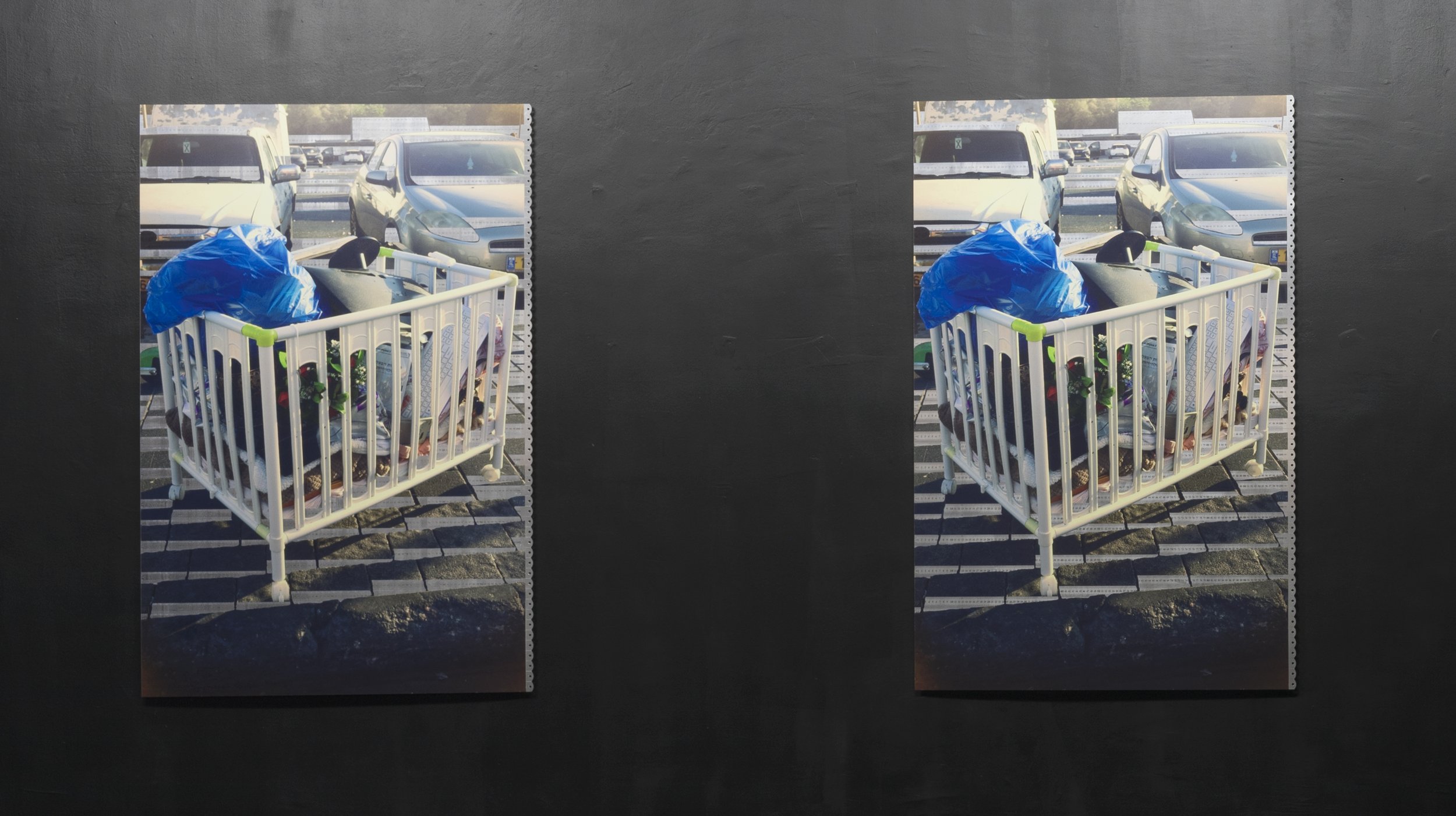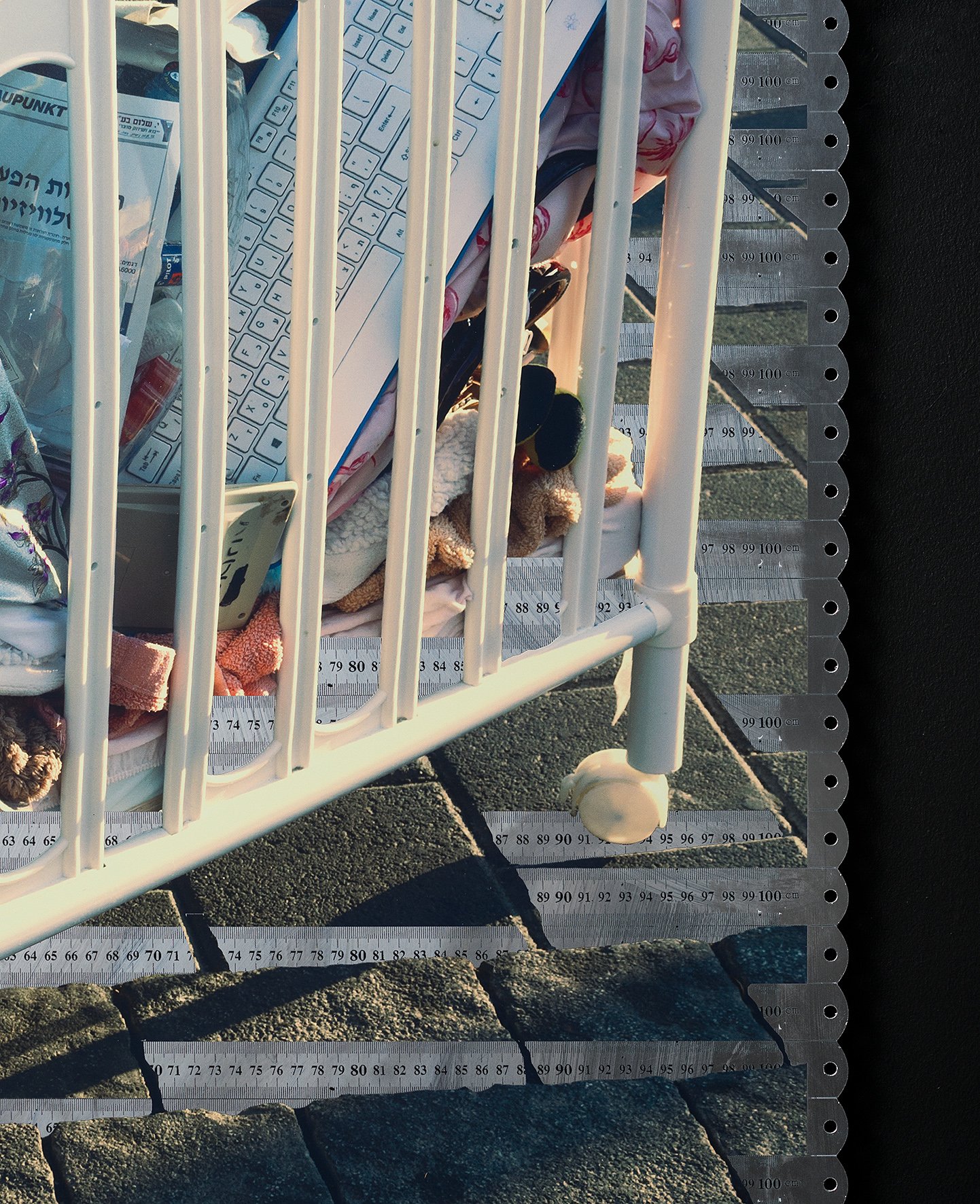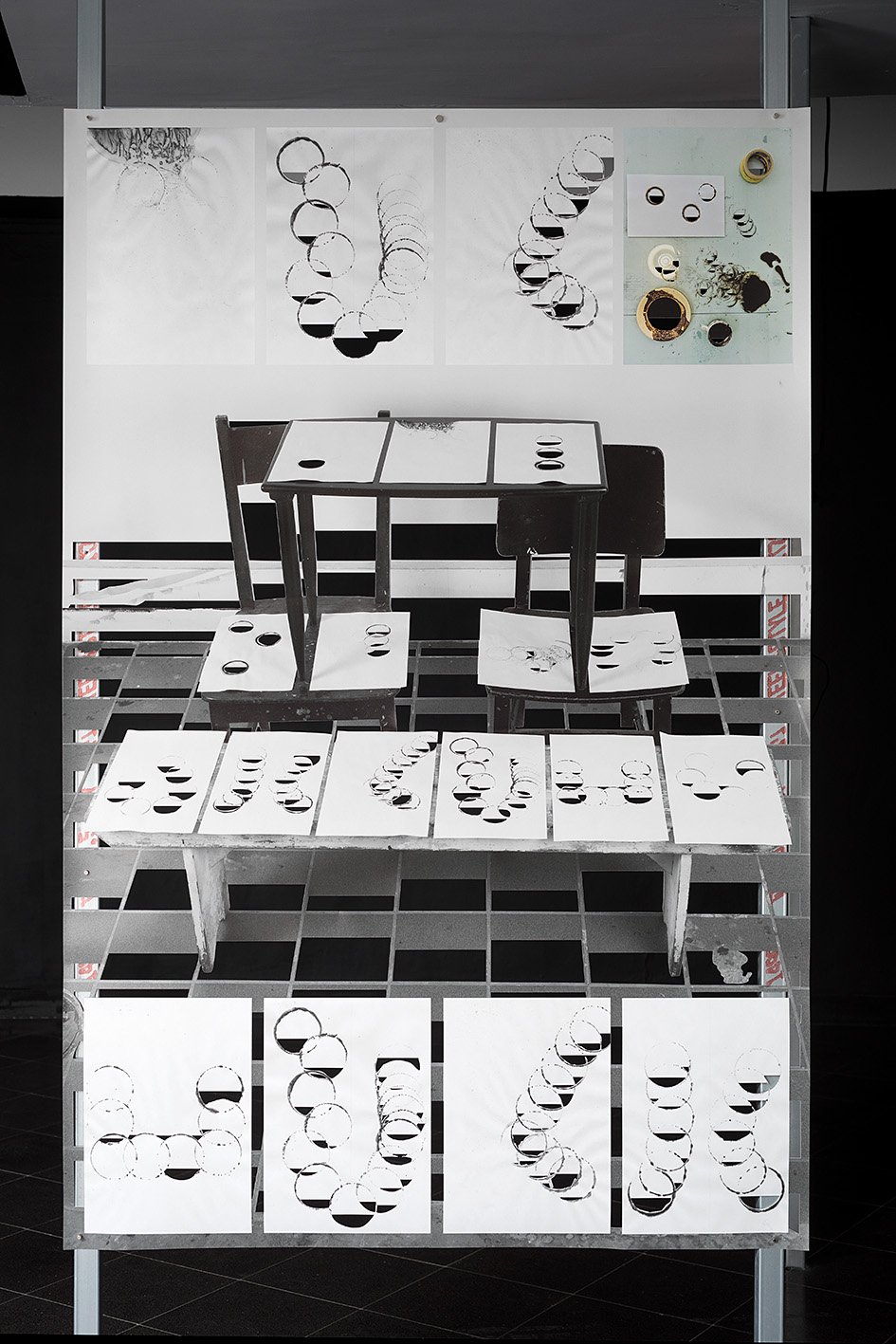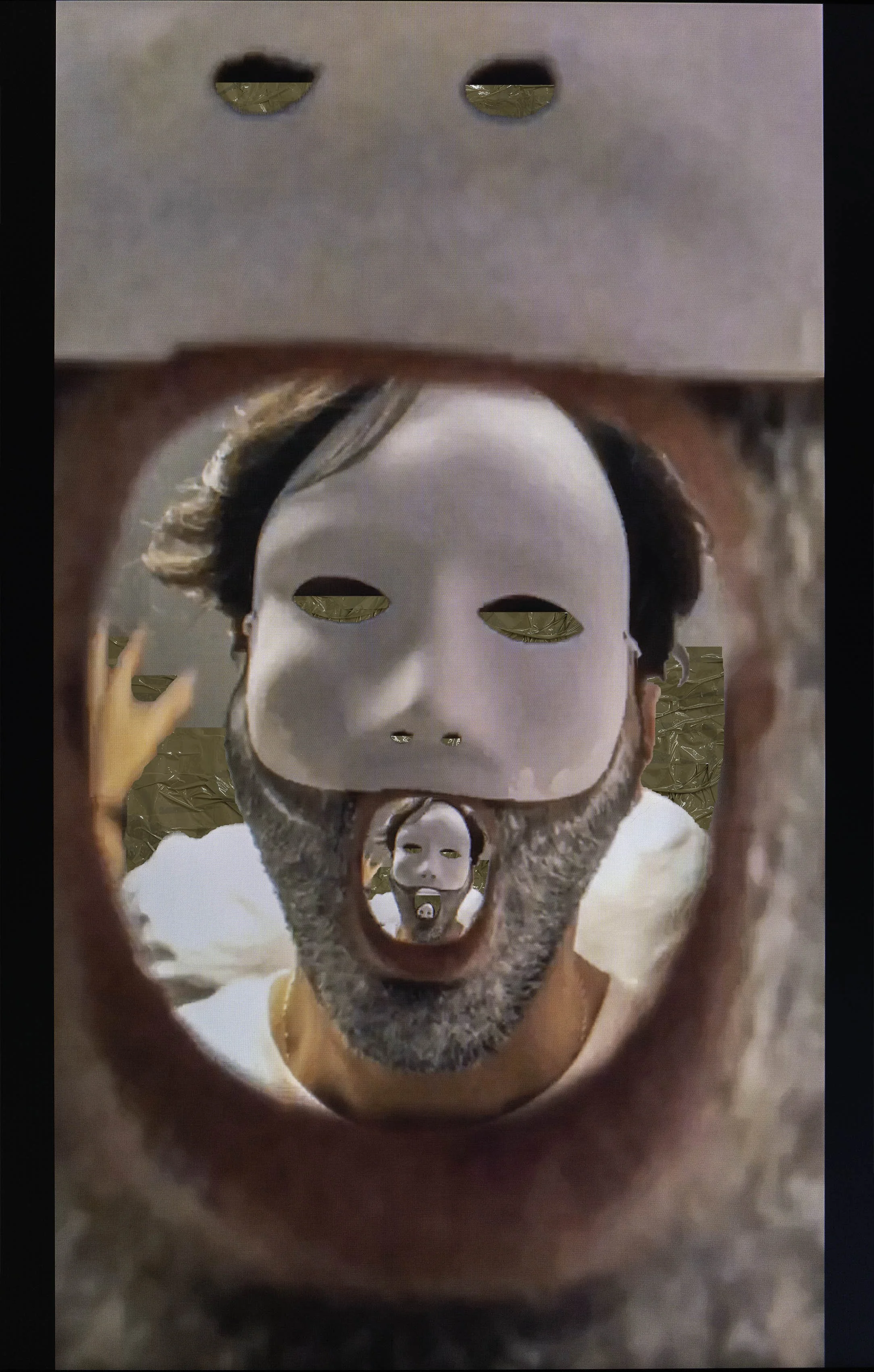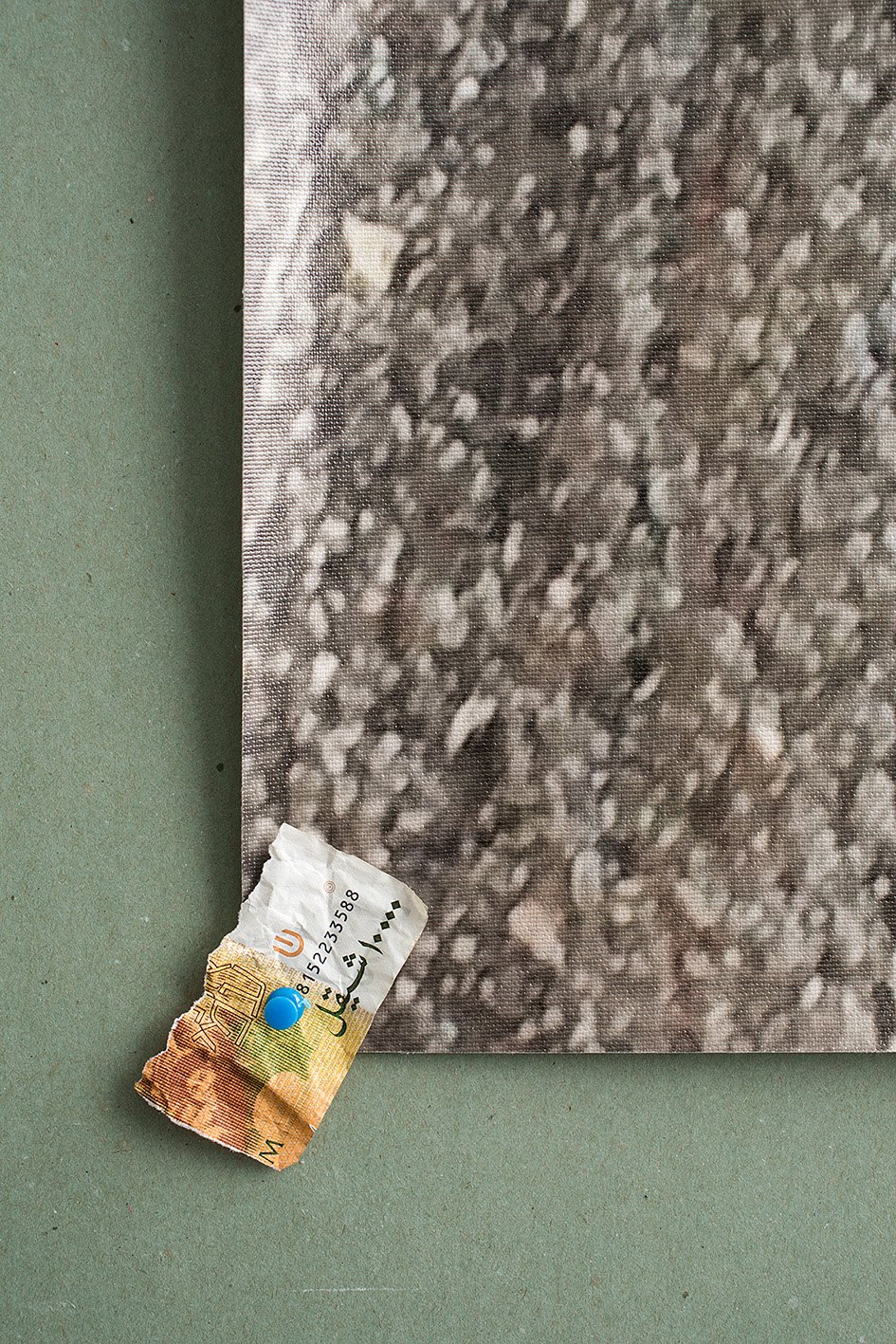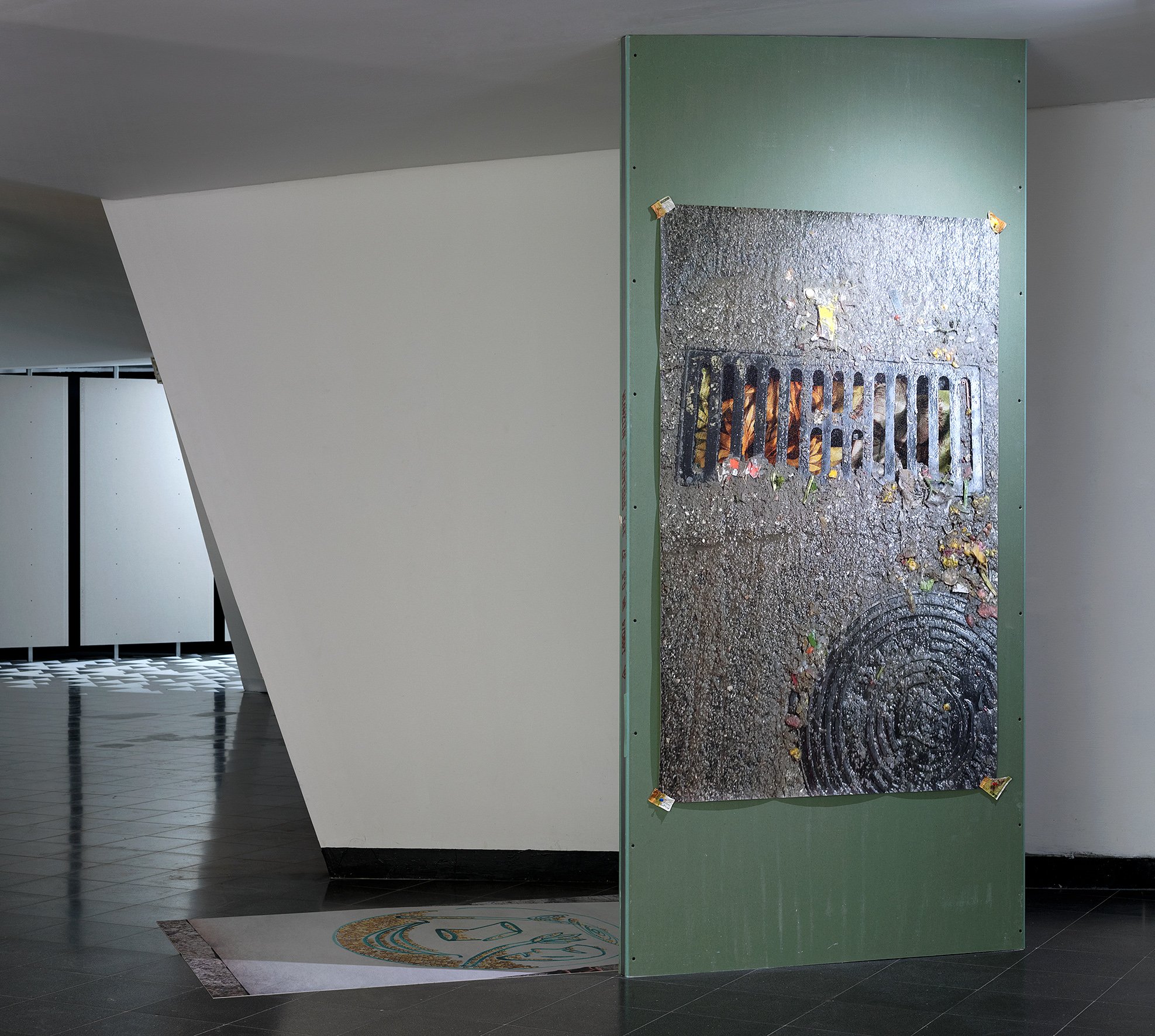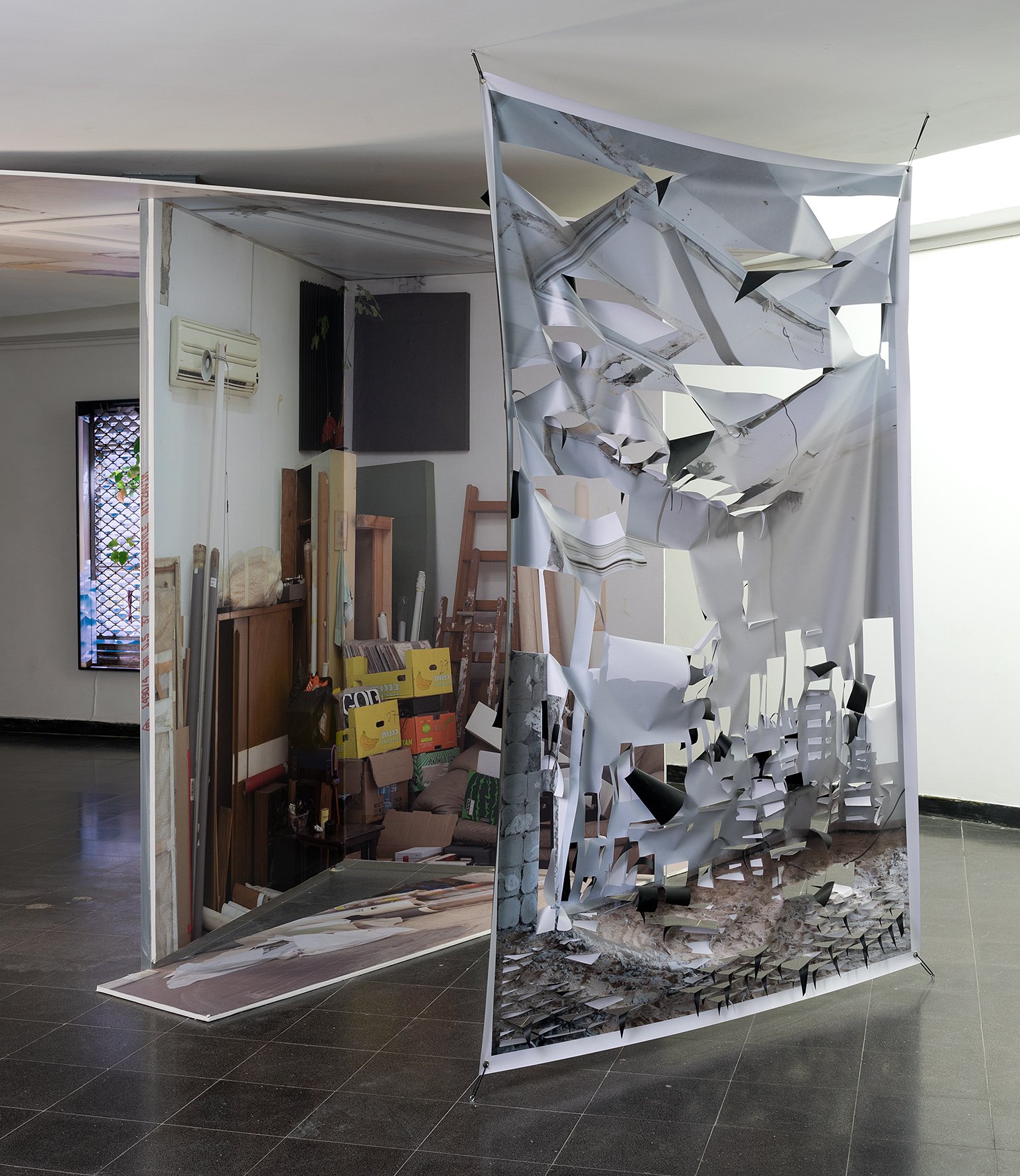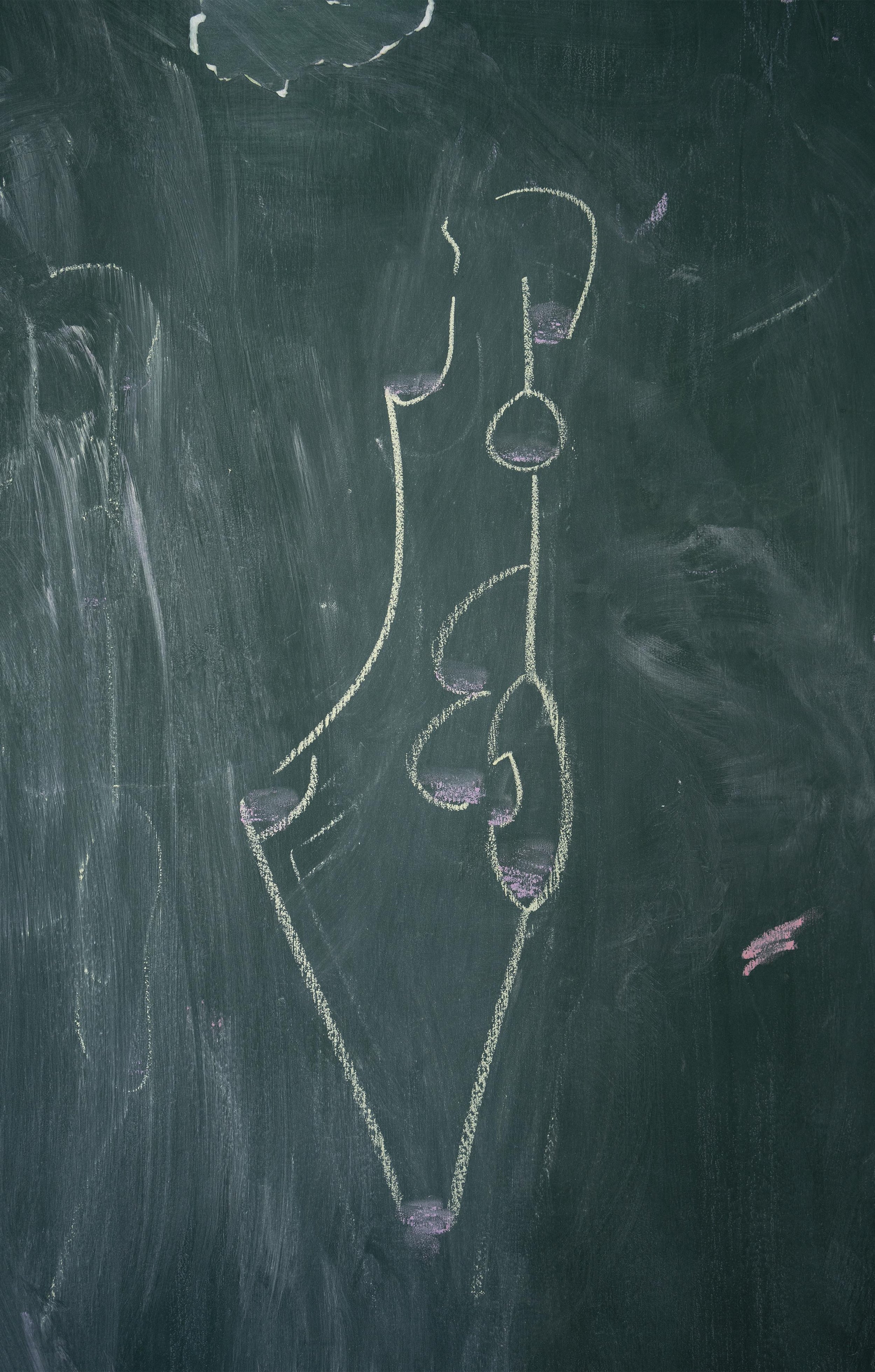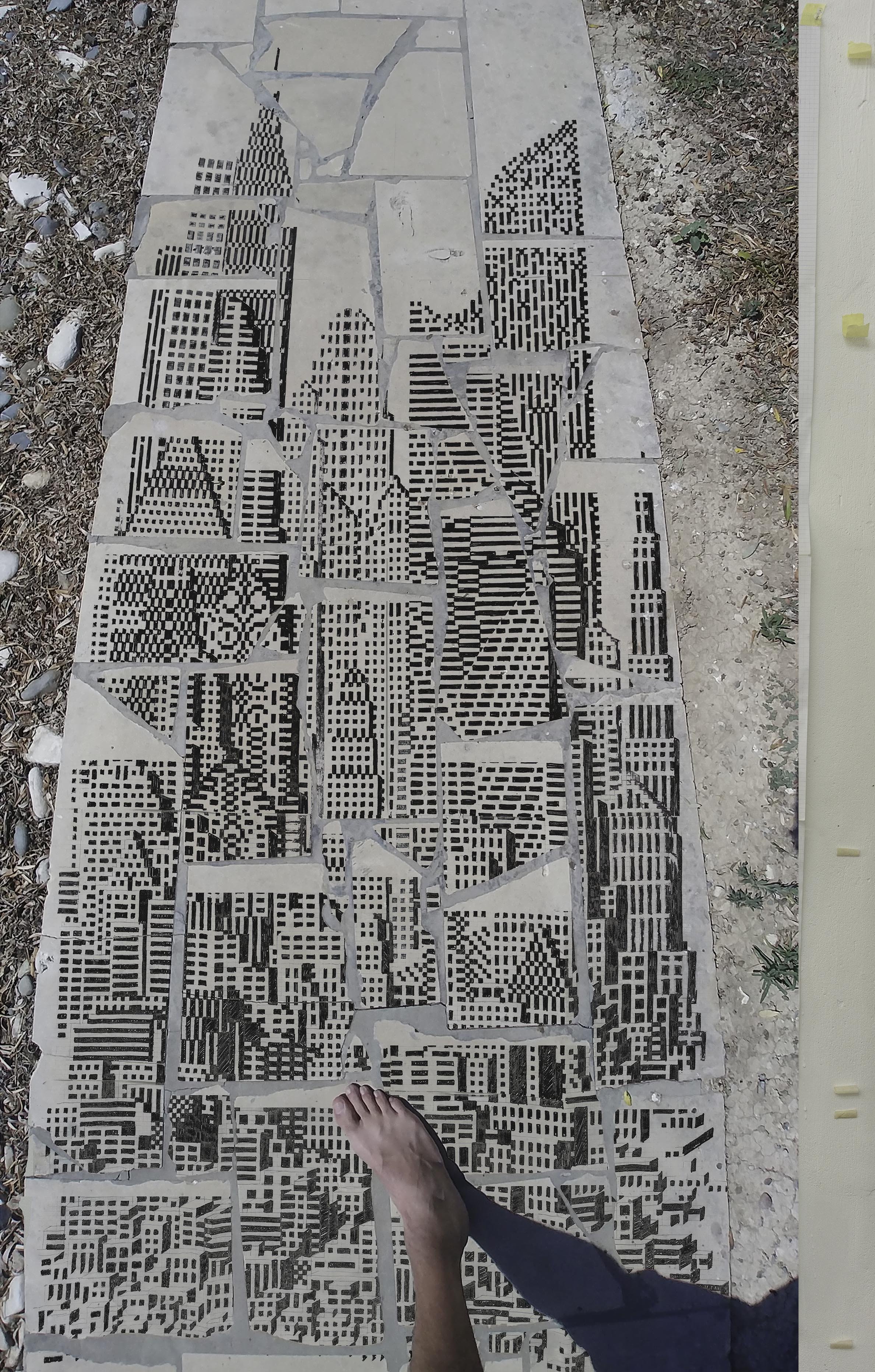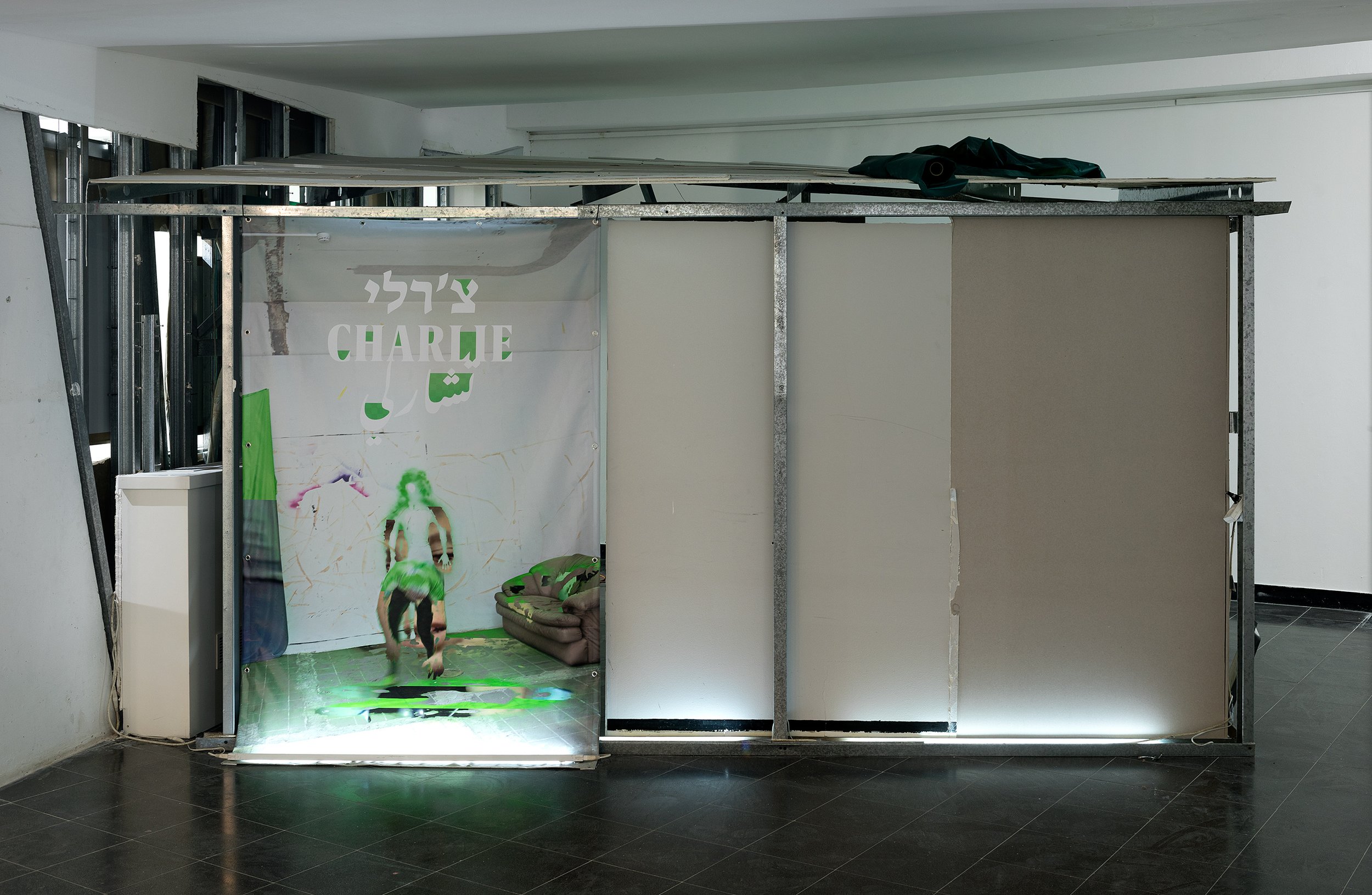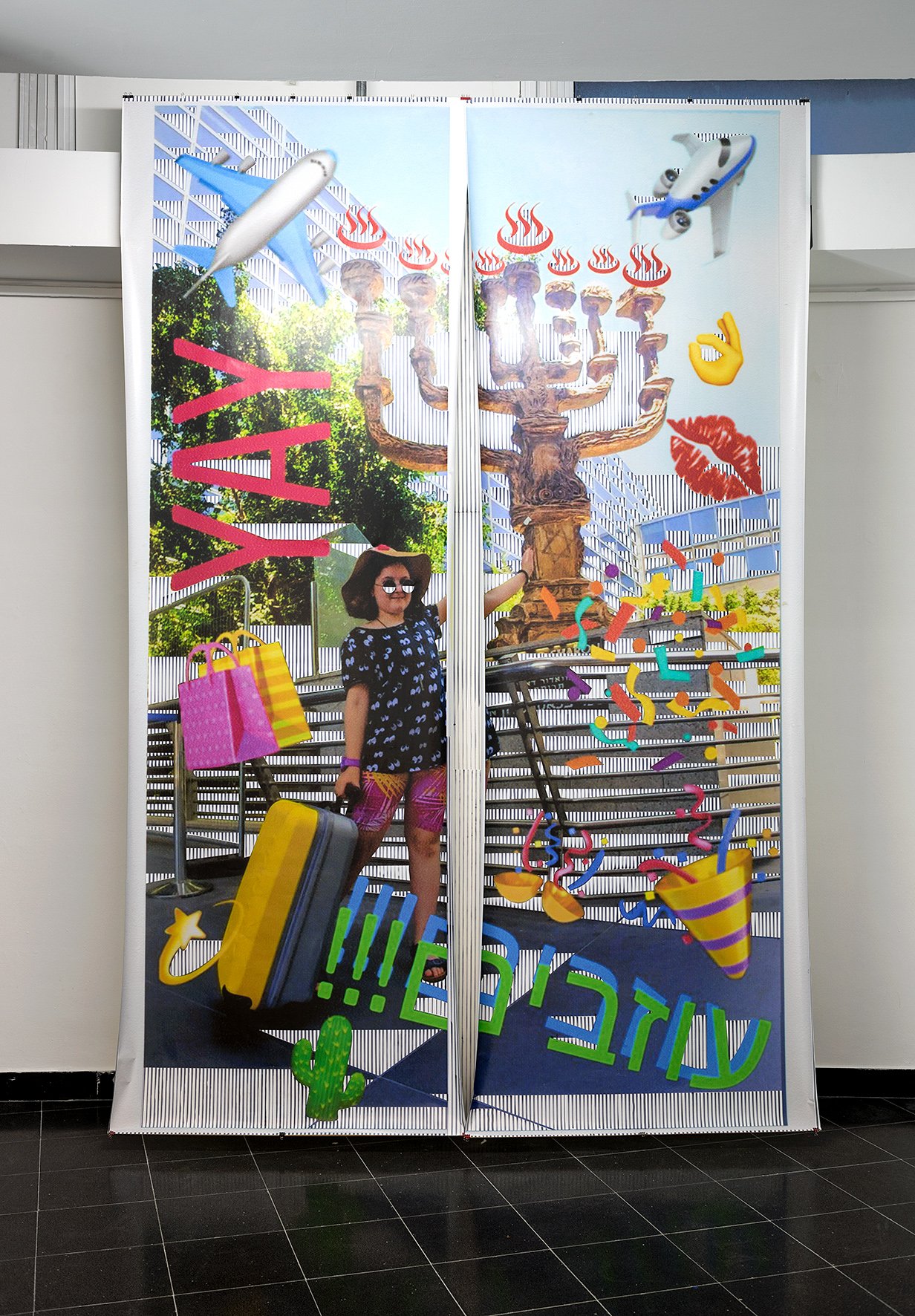Since Then, Measurements Have Begun (2020)
Solo exhibition at MoBY: Museums of Bat Yam
Curator: Hila Cohen-Schneiderman
In his exhibition “Since Then, Measurements have Begun,” Eliyahu Fatal delves into the inseparable link between interior and exterior, and the constant movement between them. The first move, which he planned to perform upon entering the space, was to clear the obstructions: He tore down many of the dry board partitions on the top floor and reopened the windows. Fatal prepared the space for a new body of works, and concurrently created these works, with the intention of transforming the museum into a single, whole and open unit of containment.
The exhibition is comprised of approximately 30 works in portrait format, faithful to the proportions of a cellular phone screen. They may be described as sights and reflections of the occurrences in the artist’s daily work space: the studio, the adjacent streets, and the nearby market. In many respects, this is Fatal’s most secular exhibition heretofore. It engages with the mundane, yet treats it with awesome reverence. Whether it is the mud and filth cumulating around a drain, bananas in varying stages of rotting, or the metal grille on the studio door—every image is a reflection of power relations and value. Fatal assesses and measures: time, distance, place, and depth; pulse, money, height, matter; status, value, memory, duration; and so on. He observes reality in a desire to comprehend it, to find the prophecy already contained in it.
Observation of the world today is performed mainly through two-dimensional images on screen. Fatal strives to instill the image with content and substance so as to transform it into a three-dimensional receptacle, which may contain materials other than those anticipated by its appearance. Since it is the dimension of depth that differentiates the two-dimensional from the three-dimensional, Fatal creates an orderly set of rules, whereby each image is given a “fill” from a different order and is subjected to countless, measured and meticulous acts. The fill is, in fact, another image or material captured in a two-dimensional gaze inside a concave form which appears within the containing image. The filling complies with the “equal measure” principle—determining that each concave form in the “holding” image will contain a filler-conduit on different levels. According to this logic, the museum space also becomes a container, on the inside and outside alike, through which the fourth dimension—the temporal dimension—is reflected: the time of anticipation, observation, and suspension. The intra-artistic law now generates an actual reality.
In this exhibition Fatal turns to the discourse of who-ness (Heb. mihut)—a Hebrew term coined by Eliezer Ben-Yehuda in the late 19th century, essentially asking: “Who is he?”, as opposed to the assertion “This is he” at the core of identity (Heb. zehut). Who-ness, by its very essence, engulfs, peels, illuminates, and exposes the totality of elements, both overt and covert, conscious as well as repressed, contained in a person (or a thing). The gate to who-ness, according to Fatal, pertains primarily to a physical, sensory experience and a careful, profound observation, which begins with the appearance of a thing, yet folds inward, into the personal, intimate dimension. To comprehend each of the works, the question “what do I see?” must be asked with regard to every single detail in the confronted image. The works’ encrypted nature demands that the question be asked over and over again, thus generating an endless movement of opening the enveloping layers within the image and folding them back inward, toward the personal experience. Each work has literal meaning (pshat) and hermeneutical interpretation (drash). The question “what do I see?” becomes a gateway, which allows transition between these strata.
The exhibition “Since Then, Measurements have Begun” was supposed to open on March 19, 2020, but two days before the opening a general lockdown was declared throughout the country due to the COVID-19 world pandemic, and the museum was closed immediately. For two months the exhibition stood frozen in time, in a state of suspension, and its fate was unclear. It is still too soon to assess the pandemic’s overall impact, but it certainly highlighted the merits of slowing down: the quantity of actions decreased, as their value and depth increased. Suspension gave rise to presence. It was not time that slowed down, but man.

